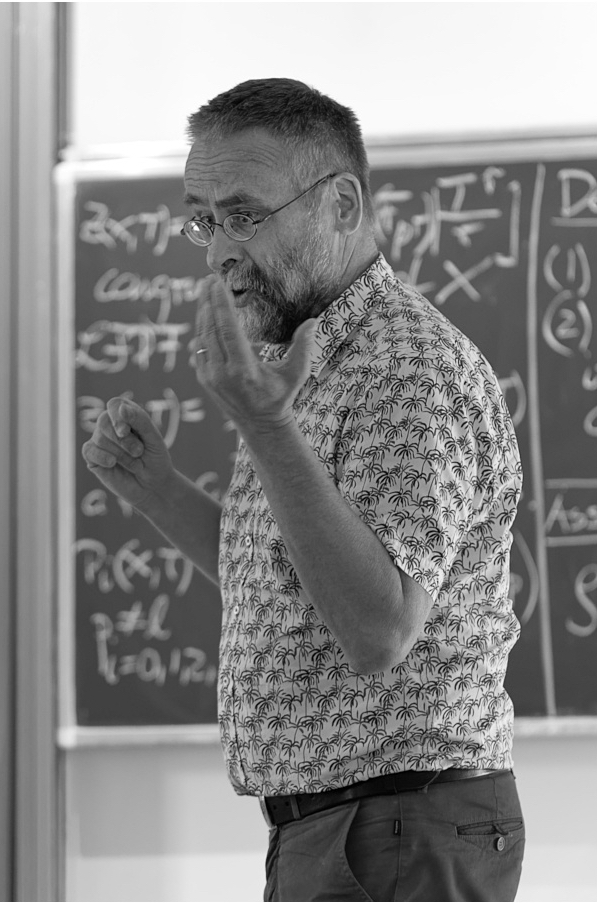
summer 2018
|
|||||||||||||||||
Research interests:arithmetic geometry, number theory, algebraic topology, algebraic K-theory |
| Home |
| CV |
| Publications |
| Conferences |
| Teaching |
| Students |
| Seminars |
| Links |
Matija Kazalicki, University of Zagreb
30.01.2019 12:00, B1-37
Title: Congruences for sporadic sequences and modular forms for non-congruence subgroups
In 1979, in the course of the proof of the irrationality of zeta(2) Robert Apery introduced numbers b_n = \sum_{k=0}^n {n \choose k}^2{n+k \choose k} that are, surprisingly, integral solutions of recursive relations (n+1)^2 u_{n+1} - (11n^2+11n+3)u_n-n^2u_{n-1} = 0. Zagier performed a computer search on first 100 million triples (A,B,C)\in Z^3 and found that the recursive relation generalizing b_n (n+1)u_{n+1} - (An^2+An+B)u_n + C n ^2 u_{n-1}=0, with the initial conditions u_{-1}=0 and u_0=1 has (non-degenerate i.e. C(A^2-4C)\ne 0) integral solution for only six more triples (whose solutions are so called sporadic sequences) . Stienstra and Beukers showed that the for prime p>=5 b_{(p-1)/2} \equiv \begin{cases} 4a^2-2p \pmod{p} \textrm{ if } p = a^2+b^2,\textrm{ a odd}\\ 0 \pmod{p} \textrm{ if } p\equiv 3 \pmod{4}.\end{cases} Recently, Osburn and Straub proved similar congruences for all but one of the six Zagier's sporadic sequences (three cases were already known to be true by the work of Stienstra and Beukers) and conjectured the congruence for the sixth sequence (which is a solution of recursion determined by triple (17,6,72). In this talk we prove that remaining congruence by studying Atkin and Swinnerton-Dyer congruences between Fourier coefficients of certain cusp form for non-congurence subgroup.
